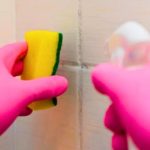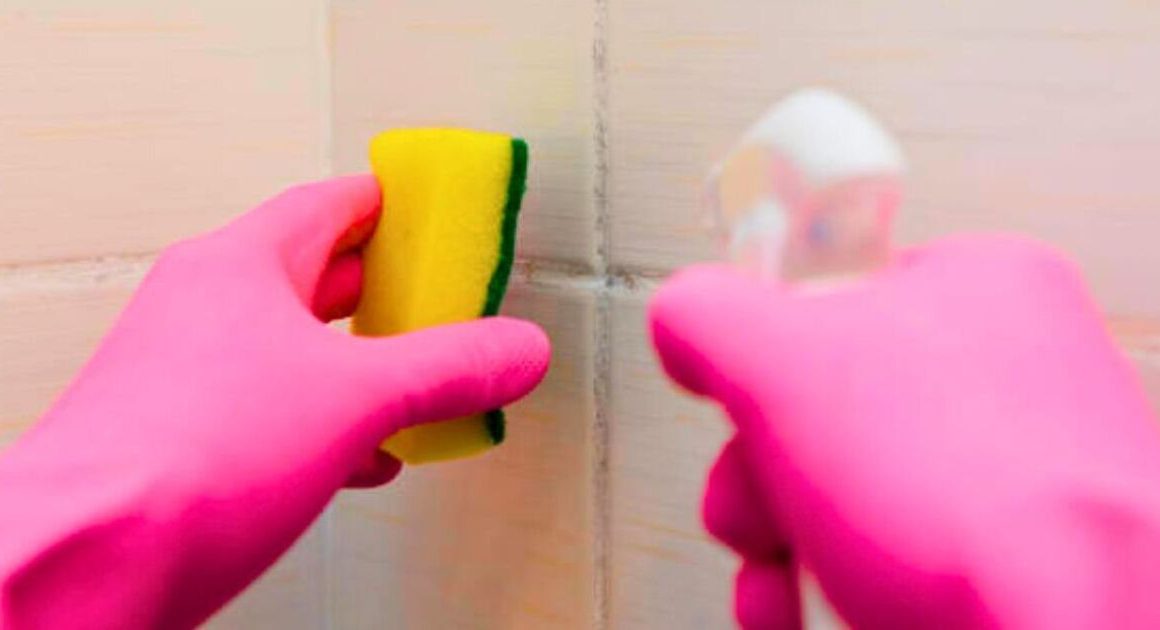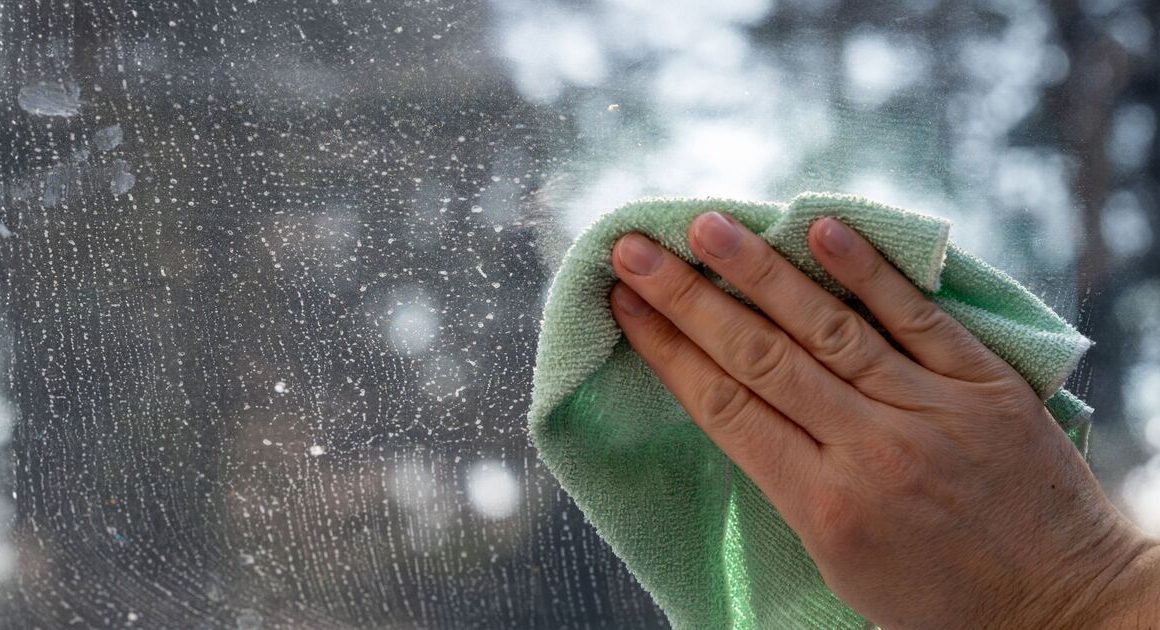Grout is what fills the space between tiles and without proper maintenance, it can stain and grow mould or mildew.
Grout staining more often than not down to mould and mildew. This can turn your grout into an unpleasant grey colour.
However, a build-up of shampoo and shower gel can also turn your bathroom grout an unappealing shade of yellow or orange.
Thankfully, cleaning mouldy or discoloured grout is “easier than you might think”, and it’s a quick way to transform your bathroom and breathe new life into it, according to cleaning expert Kerry Hale at Mira Showers.
To whiten grout, Kerry recommends households use baking soda and pair it with hydrogen peroxide.
Baking soda is an effective is an effective whitener and deodoriser. As baking soda is also a mild abrasive, using it for cleaning grout lines gives you extra firepower without the risk of scratching your tiles.
Hydrogen peroxide also has amazing whitening properties. Like bleach, hydrogen peroxide effectively kills mould spores but it is safer to use.
To use these two household items to whiten grout, start by mixing hydrogen peroxide and baking soda in a bowl to form a thick paste.
Spread the paste onto your grout using an old toothbrush to completely coat the area to be cleaned. Let it soak in for about five minutes.
Use a brush with firm bristles to scrub the grout. Apply more of the mixture letting it set again, if the grout is still dirty.
After, use a damp cloth or mop to wipe off the remaining paste. Finish the job by going over the entire tiled area with spray cleaner and wipe down with a clean cloth or mop.
Baking soda can be picked up from Sainsbry’s for 59p and hydrogen peroxide retails for £4.99 at Amazon.
Cleaning grout in the bathroom is hard work. So once you’ve got it all clean, it’s worth taking a few precautionary steps to prevent a build-up of grime and mould in the future.
Drying tiles and grout after a shower or bath is one of the “easiest ways to keep grout looking brand new for longer”. To do so, use an old towel or a squeegee to wipe the shower walls or bath down after each use.
Keeping your bathroom as dry as possible will also help “prevent mould and mildew from growing”. Open a window to ventilate the room after a steamy bath or shower to help with this.
Baking soda is an effective is an effective whitener and deodoriser. As baking soda is also a mild abrasive, using it for cleaning grout lines gives you extra firepower without the risk of scratching your tiles.
Hydrogen peroxide also has amazing whitening properties. Like bleach, hydrogen peroxide effectively kills mould spores but it is safer to use.
To use these two household items to whiten grout, start by mixing hydrogen peroxide and baking soda in a bowl to form a thick paste.










